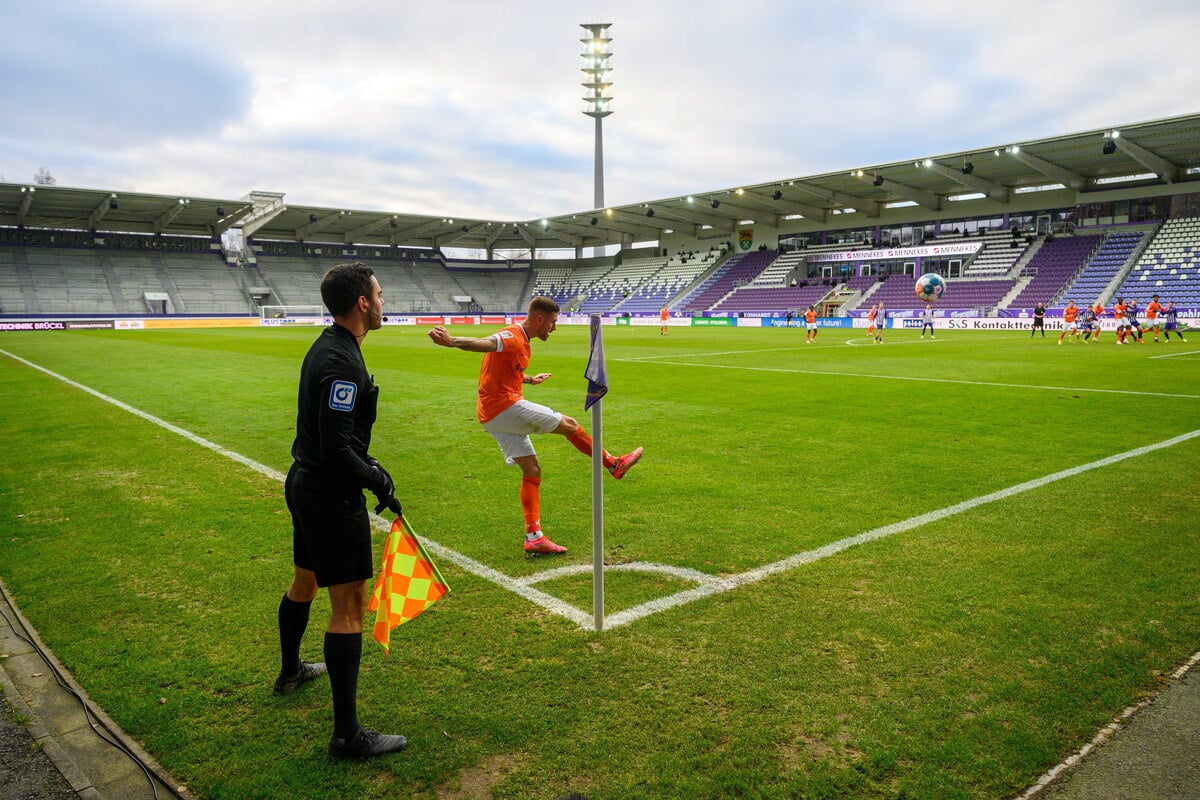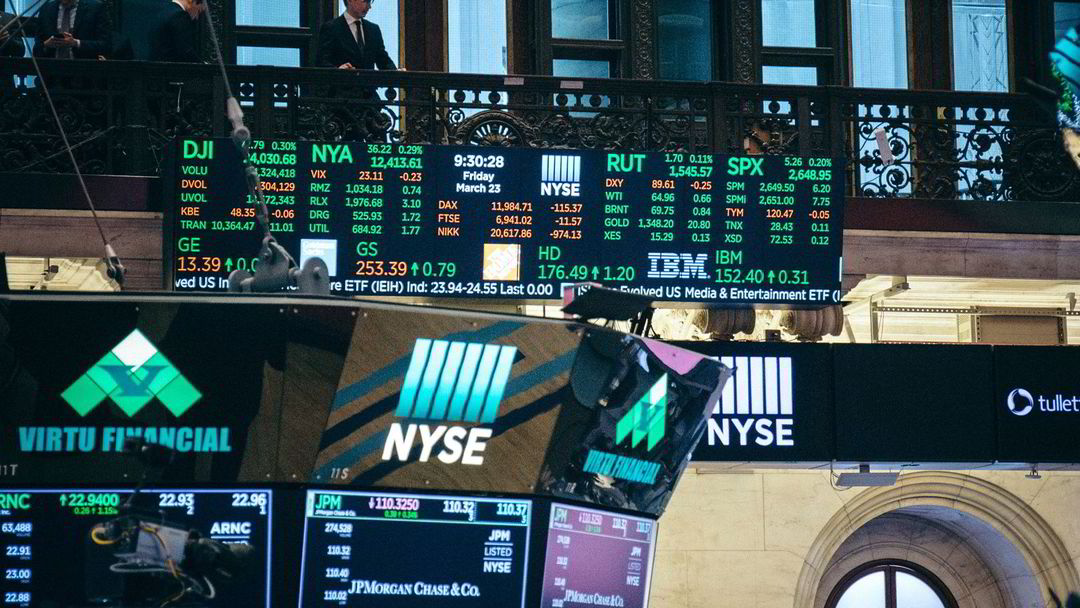Sport
December 7th, 2021 6:42 pm
What the Corona resolutions mean in sport
Spectator restrictions increase economic pressure on a number of clubs and promoters. Here are the answers to pressing questions.
–
The second division game Erzgebirge Aue against Darmstadt 98 on November 27th was the first ghost game this winter. © Archive: dpa / Robert Michael
5 Min. Reading time
–
Berlin. The memories of ghost games, season breaks and season breaks are still fresh. Before the second Corona winter and in view of the recent rapid increase in the number of infections, politicians are again resorting to similarly drastic measures. A maximum of 15,000 spectators are allowed in the arenas of the Bundesliga. In sports halls there can be a maximum of 5,000 spectators.
In regions with very high numbers of infections – such as in Saxony – large events are canceled or at least ghost games are implemented in sports. The sport is again in the intensified corona crisis mode. Sächsische.de answers the most important questions about it.
What do the resolutions mean for the Bundesliga and professional leagues in other sports?
Some federal states implemented the resolutions immediately or even went beyond them. Other countries such as Hamburg are only adding the measures to their respective ordinances this week. So it happened that last weekend the clubs of the 1st and 2nd Bundesliga were affected by restrictions in very different ways.
The top game of Borussia Dortmund against Bayern Munich was kicked off before 15,000 according to the new decisions. In Bavaria, however, the games took place without a spectator. Affected were first division FC Augsburg against VfL Bochum and second division 1. FC Nürnberg against Holstein Kiel. The state government of Baden-Württemberg only allows a maximum of 750 people in the stadium. TSG 1899 Hoffenheim was the first club from the state that it affected. “For us, this decision is of course synonymous with the return to so-called ghost games,” said managing director Frank Briel – the Prezero-Arena was empty on Saturday against Eintracht Frankfurt. The next day, only 395 spectators came to the match between VfB Stuttgart and Hertha BSC.
What is the situation like in winter sports?
For the second time in a row, the Four Hills Tournament of ski jumpers will be a ghost event, at least on the German stations. As the organizers in Oberstdorf and Garmisch-Partenkirchen announced on Monday, the competitions on December 29 and January 1 will be held without spectators as in the previous year due to the tightened Corona measures in Bavaria. Tickets that have been sold will be taken back. Whether spectators will be admitted to the jumping competitions in Innsbruck (January 4th) and Bischofshofen (January 6th) is open, but unlikely. Austria is currently in a national lockdown. The first World Cup event in Germany this coming weekend in Klingenthal will take place without fans. This also applies to the World Cups in bobsleigh, skeleton and tobogganing in Altenberg in December. At the Bobsleigh World Cup in Winterberg, on the other hand, spectators are allowed to attend – in compliance with the 3G rule. The Biathlon World Cup in Oberhof at the beginning of January is also open to spectators.
How hard are the spectator restrictions affecting football clubs financially?
The clubs have to be prepared for another million losses, which will be higher the longer the restrictions remain in force. All 36 professional clubs survived the first Corona waves relatively well. But the reserves have largely been used up. “Covid has had a massive impact on us over the past two years. This has meant that our business model no longer works in full, ”said Borussia Dortmund’s managing director Hans-Joachim Watzke.
BVB had posted a loss of over 72 million euros in the previous season due to a lack of viewer income in the pandemic. Record champions Bayern Munich had around 150 million euros less in the past two Corona seasons, while Eintracht Frankfurt’s sales shrank by 45 million euros in the past season.
What revenue losses do the other leagues have to be prepared for?
In basketball, ice hockey and handball, the clubs are even more dependent on ticket income than in football, as they sometimes make up to a third of the season’s budget. The restrictions imposed by politics hit these sports particularly hard – especially in the federal states with very high incidence figures, where a return to ghost games has already been decided or is still to be decided. Karsten Günther, managing director of the handball Bundesliga club SC DHfK Leipzig, complained: “The current situation is shitty.” The situation is similar with basketball. “In fact, half the league has ghost games,” said BBL managing director Stefan Holz.
What means can the clubs use to make up for the losses?
The most important instrument remains the federal corona aid for professional sport, which was supported with a total of around 145 million euros in the pandemic years 2020 and 2021. The professional ice hockey clubs received the largest chunk with a little more than 46 million euros. A good 35 million euros went into handball, around 29 million euros into basketball and around 22 million euros into football. In view of the ongoing corona crisis, the program, which expires at the end of the year, is to be extended. The country leaders welcomed this without exception.
What could the new losses mean for clubs and leagues?
Sustainable and long-term planning of the clubs is generally made more difficult by the uncertain situation. Lower income means, among other things, that many clubs may give up their top stars in order to save a high salary or to collect a corresponding transfer fee. However, this reduces the attractiveness and quality in the leagues as well as international competitiveness.
In addition, after the first ghost games or even the end of the season, it became clear that the fans’ loyalty to their clubs was being lost. This was particularly evident in football. Often the admitted spectator capacities in the stadiums were no longer fully used. This also applies to sports such as handball, basketball and ice hockey.
How do the measures affect amateur and popular sports?
In October, the German Olympic Sports Confederation (DOSB) complained about a loss of 792,119 memberships in its 87,600 clubs for the Corona year 2020. This corresponds to a decrease of 2.85 percent. In the children and youth sector, the rate was even more serious. Another complete stop of amateur and popular sports would pose existential problems for some clubs. (dpa)
–

